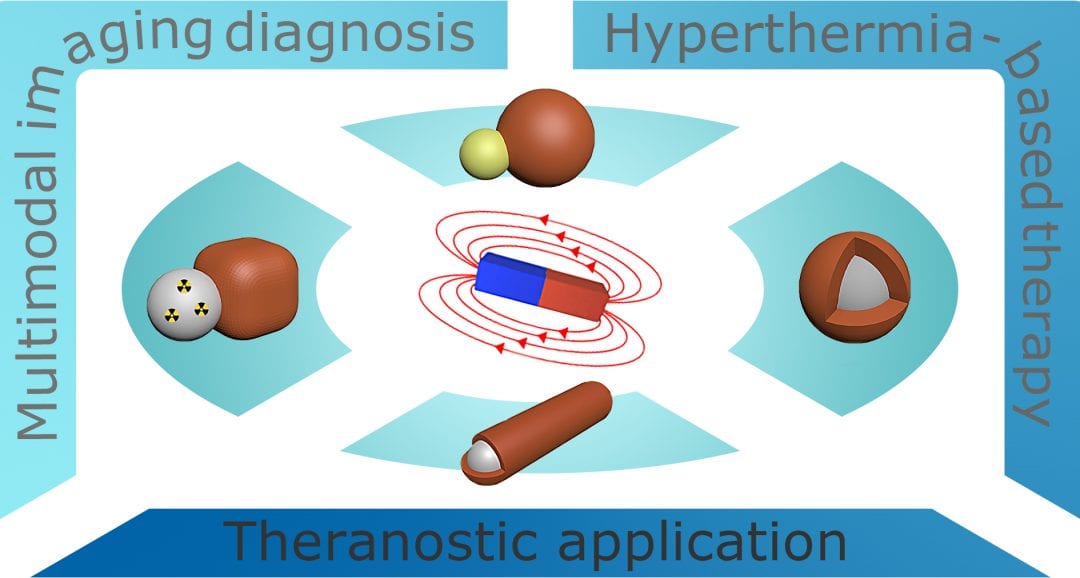Nowadays, cancer has become a serious threat to public health and has led to a higher mortality and morbidity rate than ever. MRI, CT, and other single modality diagnostic methods have been adapted for cancer treatment. However, none of these techniques can provide all necessary information for a full-body diagnosis.
Size-controlled magnetic nanoparticles were synthesized with facile methods a decade ago. Hybridization can not only take advantage of good biocompatibility and superparamagnetism of magnetic nanoparticles, but also characteristics of functional groups. Therefore, various kinds of magnetic hybrid nanomaterials (MHNs), such as noble metal and radionuclide, were innovatively brought up in the past decade. Advantages of different imaging and therapeutic techniques can be synergized while disadvantages can also be minimized.
In the recent focus article from WIREs Nanomedicine & Nanobiotechnology, Prof. Pan and colleagues offer a comprehensive and in-depth review on design and synthesis of magnetic hybrid nanomaterials, followed by their applications for biomedical diagnosis and treatment. Prof. Hélder A. Santos from the University of Helsinki (Finland), an expert in using nanostructures for biomedical applications and a previous author for WIREs, commented, “This focus article is a very valuable work addressing various approaches to the design and synthesis of various types of MHNs and provides advanced insights on the importance and potential of these systems for future cancer therapy applications.”
Starting from the design of MHNs, heterodimer and core-shell are discussed as two main morphologies. Various combinations of iron oxide nanoparticles with functional groups are also summarized with the corresponding intrinsic diagnostic and therapeutic modality. Multiple modality imaging is illustrated by taking two popular combinations, MRI-CT and MRI-radionuclide, as examples. Apart from high spatial resolution images for soft tissues from MRI, quantifiable signal with clear contrast on skeleton from CT or PET/SPECT can offer more information in a single treatment. Hyperthermia-based cancer therapy, including magnetic hyperthermia therapy and photothermal therapy, are also discussed. Imaging-guided MHNs not only can be used to monitor the delivery efficiency to the disease site of nanoparticles, but also can provide information about the therapeutic response of the disease.
Contributed by the Authors.

















